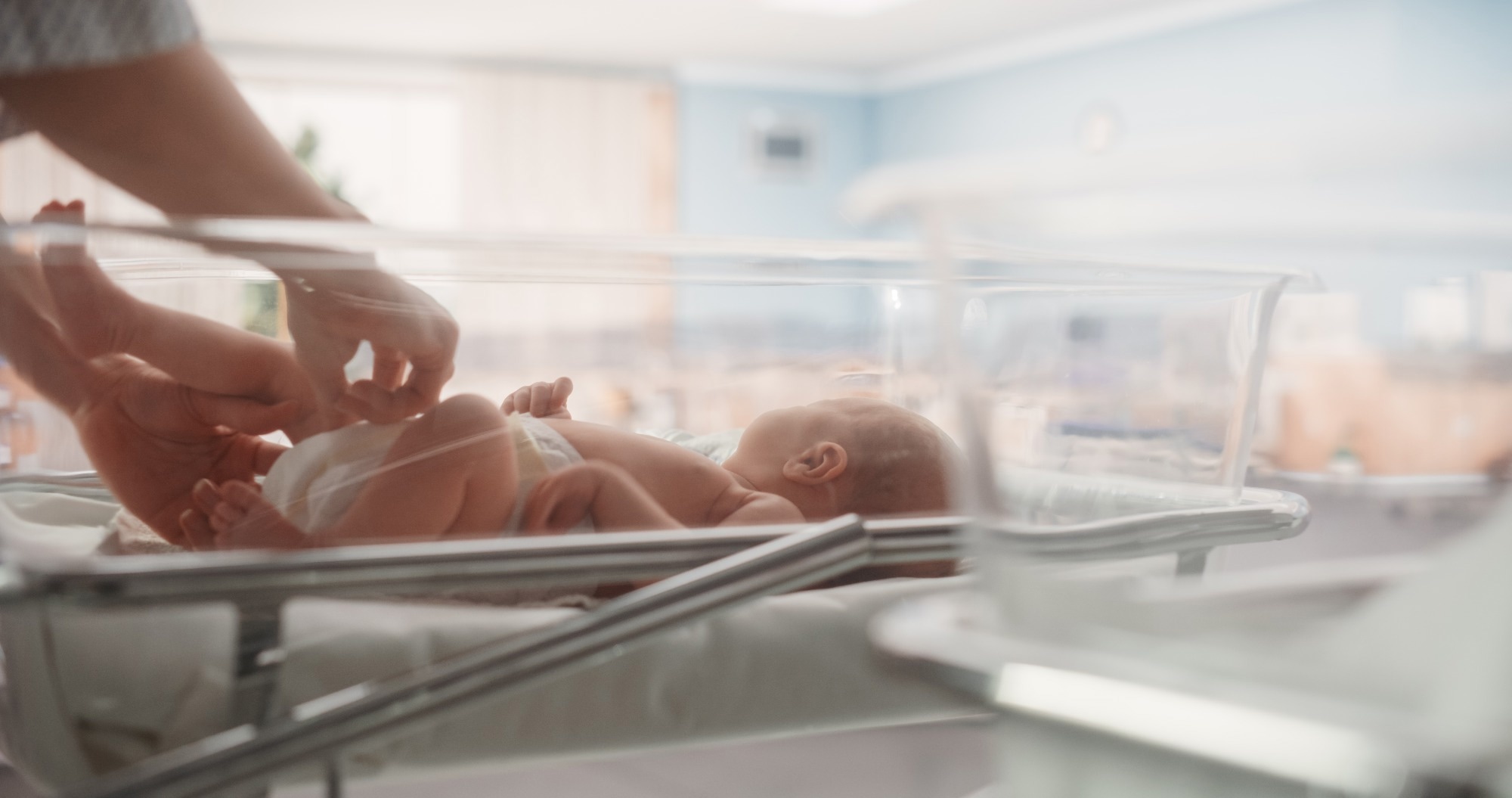Real-world data from Madrid hospitals show dramatic declines in infant ICU stays, hospital days, and RSV-related admissions after nirsevimab immunization campaign.
 Study: Impact of Nirsevimab on RSV and Non-RSV Severe Respiratory Infections in Hospitalized Infants. Image Credit: Gorodenkoff / Shutterstock.com
Study: Impact of Nirsevimab on RSV and Non-RSV Severe Respiratory Infections in Hospitalized Infants. Image Credit: Gorodenkoff / Shutterstock.com
A recent Influenza and Other Respiratory Viruses study compares the clinical and virological characteristics of respiratory infections in hospitalized infants before and after nirsevimab treatment.
Respiratory infections in infants
The respiratory syncytial virus (RSV), one of the most common seasonal pathogens responsible for respiratory infections, is a leading cause of infant hospitalization worldwide. RSV infection is associated with high morbidity and mortality, particularly in children two years of age and younger.
Approximately 1.8% of infants in Europe require hospitalization due to RSV infection within the first year of life. Many children, particularly those three months of age and younger, will develop acute lower respiratory tract infections (LRTIs) due to RSV.
In the United States, the Food and Drug Administration (FDA) has approved palivizumab (Synagis) as a preventive treatment against secondary severe LRTI-linked RSV for highly susceptible pediatric patients. Currently, the American Academy of Pediatrics (AAP) recommends the use of palivizumab as prophylaxis for infants with congenital lung disease due to premature birth or those born prematurely at 29 weeks of gestation or less who are entering their first RSV season. Despite these indications, over 90% of infants hospitalized for RSV-LRTI are otherwise healthy and do not meet the criteria to receive palivizumab prophylaxis.
In July 2023, the FDA approved the monoclonal antibody nirsevimab (Beyfortus) for RSV prophylaxis. Soon thereafter, the Advisory Committee on Immunization Practices and AAP unanimously recommended that all infants at high risk for severe RSV during their second year of life, as well as infants eight months of age and younger who are entering their first RSV season, receive nirsevimab.
In addition to the U.S., nirsevimab was also administered in maternity wards in Spain between October 2023 and March 2024, with an overall immunization coverage of 87% in Madrid at the end of the campaign.
About the study
Data for the current study were obtained during the ongoing Spanish prospective investigation associated with respiratory tract infections in children. All children 12 months of age and younger who were hospitalized for an LRTI in Severo Ochoa and La Paz Hospital in Madrid, Spain, were considered for the analysis.
These infants were hospitalized between October 1, 2022, and March 31, 2023 (S1) and between October 1, 2023, and March 31, 2024 (S2). S2 patients were significantly older, with fewer infants younger than one month of age than in S1.
All clinical and epidemiological data were assessed based on whether a patient received nirsevimab and whether hospitalization occurred before or after receiving nirsevimab.
Nasopharyngeal samples were assessed for the presence of RSV, human metapneumovirus (HMPV), adenovirus (AdV), rhinovirus (HRV), influenza virus, human bocavirus (HBoV), parainfluenza virus (PIV), and human coronaviruses (HCOV), including severe acute respiratory syndrome coronavirus-2 (SARS-CoV-2).
Study findings
The current study included 669 infants, 480 and 189 of whom were hospitalized during the S1 and S2 periods, respectively.
A significant reduction of 62.5% in hospitalization for LRTIs was observed between October 2023 and March 2024 compared to data from the same period of the previous year. Infant hospital admissions due to RSV infection similarly decreased by 78%.
In S2, of the 33.3% of infants who received nirsevimab, 17.4% tested positive for RSV at admission. The mean age of these patients during nirsevimab administration was 36.6 days, whereas the mean time interval between nirsevimab administration and hospital admission was 60.8 days.
Bronchiolitis was less frequently diagnosed in S2 than in S1. During S2, the mean length of hospital stay significantly reduced, with few patients requiring hospitalization for more than five days.
Compared to S1, hospitalization for five days or more in S2 decreased by 64.6% and 47.7% in infants younger than three and six months of age, respectively. Intensive care unit (ICU) admissions also declined by 74.5%, from 118 cases in S1 to 30 cases in S2.
Infants who received nirsevimab were typically younger at admission. Nirsevimab treatment was associated with fewer fevers that were shorter in duration, reduced high-flow oxygen requirements, less antibiotic prescriptions, and lower viral titers. Although not statistically significant, these infants were also less likely to be admitted to the ICU.
Among non-nirsevimab patients, the peak incidence of RSV admissions occurred in November, with a surge primarily observed between October and December. RSV infections in nirsevimab-treated infants were more evenly distributed between October and March; however, both groups exhibited similar frequency of RSV coinfections with other respiratory viruses.
Conclusions
The study findings confirm the protective effects of nirsevimab treatment in infants against severe outcomes associated with RSV infection. Nirsevimab treatment also significantly reduced hospitalization frequency and duration due to infections caused by HMPV and AdV.
Journal reference:
- García-García, M. L., Alonso-Lopez, P., Alcolea, S., et al. (2025) Impact of Nirsevimab on RSV and Non-RSV Severe Respiratory Infections in Hospitalized Infants. Influenza and Other Respiratory Viruses 19(5), e70105. doi:10.1111/irv.70105, https://onlinelibrary.wiley.com/doi/10.1111/irv.70105